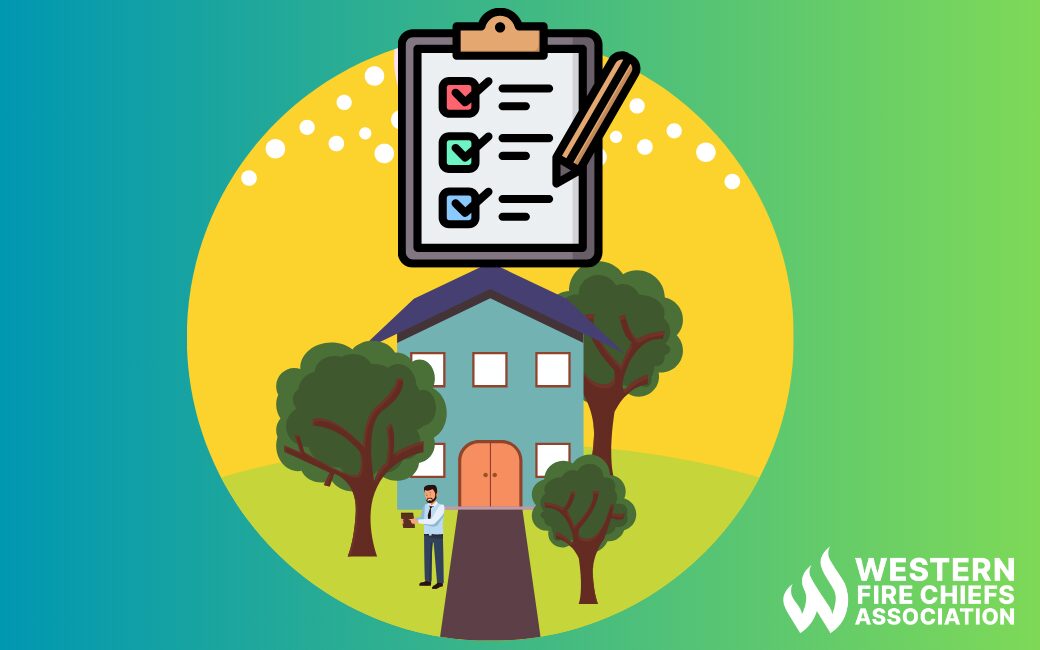Fire Pit Safety Tips
Stay safe around the campfire with tips from the Western Fire Chiefs Association. Learn essential precautions and practices for a worry-free outdoor campfire.
Learn the essential steps to assess the damage after a wildfire with guidance from the WFCA. We'll guide you through the process to aid recovery and reconstruction.
Published:November 21, 2023
Edited:March 1, 2024

Learn the essential steps to assess the damage after a wildfire with guidance from the WFCA. We’ll guide you through the process to aid recovery and reconstruction.
Following a wildfire, it is crucial to assess the extent of the damage by carefully inspecting your property. Document the aftermath by taking photos, taking detailed notes, and prioritizing safety. In this article, learn how to take these steps and reach out to your insurance company for assistance.
Once officials have given you the green light to return to your home after a wildfire, it’s essential to conduct a comprehensive check of both the interior and exterior before considering moving back in. Below is a list of what you should check:
Structural issues: Look for any loose, broken, or damaged power and gas lines. Examine load-bearing walls, support beams, and other critical structural elements. Look for cracks, sagging ceilings, or leaning walls as these may indicate structural damage. If a door is jammed, do not force it open as it may be supporting the rest of the home.1
Roof: Take a close look at the roof for any signs of damage like missing or damaged shingles. Check for potential leaks or weakened areas that may require repair.
Windows: Inspect windows for cracks, broken glass, or damage to frames. Make sure they are still properly sealed to prevent any further issues.
Siding: Assess the condition of your home’s exterior siding. Look for charring, warping, or any other damage caused by the fire.
Personal belongings: Examine your personal belongings for any smoke damage, soot, or water damage from firefighting efforts. It’s important to remove and clean items as necessary to prevent further damage or contamination.
Assessing your trees and landscaping after a wildfire is just as important as the interior and exterior of your home, to see how they may have been affected. Prioritize safety by ensuring the area is secure before inspecting. Take a look at each tree individually, checking for signs of fire damage like scorched bark, charred limbs, or weak trunks. An effective way to examine trees is by picking small, thumb-sized pieces of bark away from the tree until you have reached half an inch in depth. If the tree tissue is white or has a green spongy material then there is no damage done. If the tree tissue is tan or brown, then further examination is needed by a professional to assess the level of damage.
Also, pay attention to the overall health of the trees by looking for wilting leaves, loss of foliage, or any signs of disease. During this process, also evaluate the condition of any plants, bushes, and other landscaping that is on the property. Take note of any fire damage like burnt leaves or scorched stems. Check the soil as well for dryness, erosion, or changes. If you’re unsure about anything, it’s a good idea to get advice from a professional arborist or horticulturist.
When assessing your home after a wildfire, it’s highly advisable to capture photos and videos before anything is touched or moved. Use your smartphone camera to take clear, steady photos and videos of both the inside and outside of your home where the fire occurred.
During your assessment, develop a written inventory of all the damaged or lost items. In this inventory, be sure to include as much detail about each item as you can. Detailed documentation can be valuable for insurance claims and assessing the full extent of the damage.
Beyond your own documentation, you must also request and obtain a copy of the report your fire department submitted to the U.S. Fire Administration’s National Fire Incident Reporting System (NFIRS). This report is known as the fire incident report. First, you will want to contact your local fire department or the fire agency that is responsible for the area where the incident occurred. You will need to provide specific details about the incident such as the date, time, and location. Some departments require a form to be filled out or simply submit an email. Once these steps have been completed, the fire department should contact you within a week. In Oregon, fire departments are required by statute to provide the Oregon State Fire Marshal with a full report of every fire occurring within their jurisdiction within seven days.3
Initiating contact with your insurance agent immediately after a wildfire to report the incident is one of the foremost crucial steps in the aftermath. Provide your agent with all of the necessary pictures, videos, and documentation. Include your assessment of the damage and any other supporting documents. Be prepared to answer any questions and keep a record of all communication with your insurance agent, including dates and details discussed.
Stay safe around the campfire with tips from the Western Fire Chiefs Association. Learn essential precautions and practices for a worry-free outdoor campfire.
Discover essential firework safety tips to ensure a dazzling display without accidents. Learn how to celebrate responsibly with expert guidance from WFCA.
Explore the role of AI in wildfire prediction with guidance from the WFCA. Learn how advanced algorithms and data analytics enhance early detection and response.